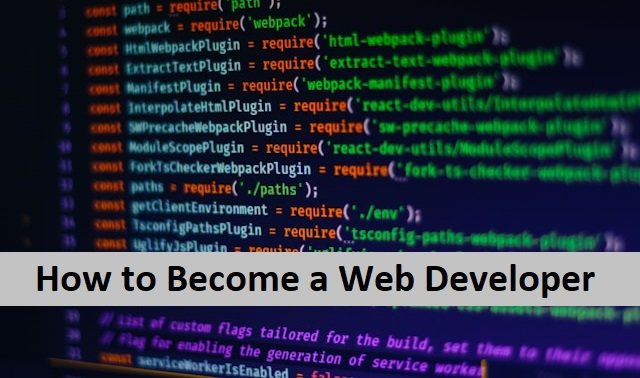The path to entering this brand-new business can seem difficult if you want to become a designer and are currently working in a creative capacity that thrills you daily. It’s scary to change your job late to pursue your love. Knowing where to begin when learning about a broad subject like design can be challenging, and it might feel hazardous, especially if you have a stable career.
However, how can you pick the ideal approach that works for your life when many resources are available for learning design? Undoubtedly, you can find something. The correct education is available, regardless of whether you’re a high school student about to graduate or have worked in another industry for 40 years and want a significant shift.
We’ve put together a list of the best ways to study design based on your personality, budget, lifestyle, and specific goals with upsides and downsides, so let’s get started.
Do You Like to Learn in a Classroom or in Person?
Suppose you’re the kind of learner who retains information better when you’re in a real classroom with instructors and other students, assuming you have the luxury of attending a classroom full-time. In that case, you should think about an in-person design school. The two main approaches for doing this are:
- Traditional Design College
- An intensive Bootcamp.
Traditional Design College:
Formal education at an accredited design school is still one of the finest methods to become a designer if you have the resources and the time. You’ll not only spend years mastering the principles and refining your skills using modern design tools but you’ll also be surrounded by classmates who share your passion and instructors with decades of combined industry experience. Also, read about Tooltips For Mobile User Interfaces.
Upsides:
- At a design college, you’ll spend years learning the fundamentals. When you’re looking for a career and developing your technical skills, this can truly help you stand out.
- Hundreds of individuals will work hard around you, including educators passionate about design education.
- Top design schools take pleasure in regularly changing their curricula to reflect current design trends.
- A fantastic alumni community and career services division will assist you in finding employment after graduation.
Downsides:
- It moves slowly. Design school is probably not ideal for you if you want to become a designer as soon as possible because most programmes require at least three years of completion. Even though some institutions offer accelerated degrees, they require at least a year.
- It is pricey. The majority of conventional design schools cost at least $100,000.
- The curriculum is not very adaptable. You will have more options for classes once you’ve decided on a major, but most universities still want you to devote at least a year of your studies to a set core curriculum.
In-person Bootcamp:
An in-person bootcamp can be your best option if you don’t enjoy your job and want to transition as swiftly as possible to a more meaningful career. Although there are many different kinds of in-person bootcamps, they typically consist of 40+ hours of weekly classroom instruction, numerous group tasks, one-on-one meetings with a designated mentor, and excellent job placement prospects after the programme.
Many boot camps offer you to pay in advance or take the course for free in exchange for giving them a particular portion of your first post-Bootcamp job’s earnings.
Upsides:
- There are numerous chances for work placement. People who want to land a job quickly attend bootcamps. Most bootcamps host employment fairs with lots of companies present after completion.
- There will be a lot of hyper-motivated individuals all around you. In most bootcamps, you’ll collaborate with your classmates on group projects and be partnered with mentors who can offer you feedback and criticism.
- It moves quickly. A full design education is typically condensed into three months by bootcamps. They are challenging, but you can bet you’ll finish with more knowledge than you anticipated gaining in such a short period.
- With a focus on preparing you for the labour market, the programme is constructed around the most recent and turning design theories and techniques.
Downsides:
- It is still pricey. A Bootcamp can cost you $10,000 to $15,000 over three months, despite being significantly less expensive than a typical institution.
- The course of study is rigid. Bootcamps follow a uniform curriculum since they want to teach you the fundamentals and make you proficient as quickly as possible. For the first month or two of the Bootcamp, you might find yourself uninterested if you’ve previously spent several months taking online courses on the subject you want to study.
- After the Bootcamp, you’ll need to keep learning new things. Since three months is not much time, many companies would want to know that you have actively continued to learn and develop your portfolio after finishing a BootCamp. Also, read about Useful Boilerplates.
Do You Wish To Study Online?
For most individuals, quitting their work to join a bootcamp or a full-time study at a university isn’t a viable option. Fortunately, several options are available for those who want to learn at their own pace and are on a tight budget. These alternatives still allow you to complete a planned curriculum created for students attempting to launch careers in the design industry, and many of them even include one-on-one elements
Online bootcamps:
Online bootcamps have been made possible by institutions like Bloc and Springboard. The only difference between their curriculum and in-person counterparts is that you work from a laptop rather than spending 40 hours a week in a classroom. Online bootcamps are fully listed on the Course Report.
Upsides:
- Online bootcamps provide numerous job placement options, just like in-person bootcamps do.
- They are swift. Online bootcamps condense years of instruction into a few short months, just like traditional bootcamps do.
- They are adaptable. In general, online bootcamps allow you to learn at your own pace. You can fit your studies around your other activities by choosing between live classes and prerecorded videos for some of your lessons.
Downsides:
- They are still pricey. For three months of instruction, an online bootcamp will cost you between $5,000 and $15,000.
- The course of study is rigid. The pace at which you learn is somewhat flexible, but you’ll still need to follow a strict curriculum and finish tasks by specific dates.
- They don’t have a lot of customization. While you’ll be given a mentor and collaborate on projects with other students, you won’t experience what makes bootcamps so successful: being continuously surrounded by other driven students and teachers. Although they are difficult to measure, there are advantages to receiving instruction in person.
Structured Online Courses:
A full-time design education may be too demanding for many people for various reasons. Fortunately, many design schools have developed more simplified programmes that let you learn design at your own pace while still receiving frequent one-on-one mentoring input.
A few excellent choices combine curriculum with regular mentorship sessions if you wish to learn with a mentor. It will connect you with projects, periodic feedback meetings, and frameworks to assist you in learning design and achieving your objectives.
Upsides:
- They are inexpensive! These courses’ monthly costs often range from $20 to $300.
- Pace yourself as you work. You can take advantage of a structured curriculum while taking these courses, going at your own pace and taking as much time as you need to learn the material.
- They are adaptable. Although many of these part-time courses have a set baseline curriculum, you can easily add to your education by taking as many other part-time courses as you wish from other websites.
Downsides:
- The focus is not on mentoring. You can occasionally interact with a mentor in some of the more expensive self-paced courses, but you won’t have as much ongoing access to instructors as at a bootcamp.
- You won’t have classmates to keep you motivated and help you develop.
- There are no chances for job placement. If you choose this path, you’ll have to find a job. There are, fortunately, several excellent job placement agencies for those attempting to enter a new industry.
Other Structured Online Platforms
If you’re the type of person with precise goals and don’t want to waste time studying skills that aren’t necessary to reach those goals. There are literally thousands of online websites, tools, and platforms that are all intended to empower the actual self-learner. Additionally, they are generally quite affordable (or accessible)! It should be noted that most of the materials in this category emphasize traditional lectures and videos. If you choose this path, you’ll need to create your projects and hold yourself responsible for continuing to practise as you go.
Upsides:
- You are free to create any curriculum you want using any number of resources because you will only be consuming information that is relevant to your particular goals.
- Even the premium ones (like Skillshare) typically have a monthly cap of roughly $10, making most of these services entirely accessible.
- They are varied. You may be sure that you’ll be learning design thinking from people with a large variety of experiences and opinions by utilizing information from numerous websites.
Downsides:
- No personalization exists. It’s essential to talk with an experienced designer while understanding design concepts. If you follow this self-guided path, we advise frequently talking with a design mentor to obtain advice and direction.
- You won’t have any prospects for job placement. But keep in mind that several employment boards (like AIGA’s) help you get started.
- You won’t be given any guidance. If you choose to learn independently, conduct extensive web research to determine the abilities, you’ll need to acquire to realize your objectives.
The Self-Taught Route
Last but not least, we’d like to talk about what might be the most straightforward method for learning design: teaching you! Similar to the above-discussed unstructured online platforms.
Your best companion on this route will be YouTube. The appeal of being completely self-taught is that you can genuinely create a curriculum that is 100% personalised for you.
Great! You may curate an instructional and concept-heavy YouTube playlist for logo design. The answers to your inquiries have probably already been asked and answered because there are millions of lesson videos online that explain how to perform the most activities in design software.
If you choose the self-taught path, concentrate on making connections with other aspiring designers and finding a mentor. Receiving continual feedback is one of the best methods to ensure you can develop natural talents into in-depth knowledge. You can progress as quickly as you’d like if you can locate other designers who share your viewpoints and are devoted to learning new abilities independently. Many companies value tenacity and innovation, so if you can demonstrate that you chose the self-taught path because you understood what you wanted to accomplish and could accomplish it more quickly by creating your education, you’ll be in excellent condition!
Last Thoughts – Which Design Direction Wills You Take?
After reading about the various ways to become a designer in the present era, you may still be unsure which path would provide you with the most probability of finding employment in the design sector. The answer depends entirely on your schedule, financial situation, and learning preferences.
Each method has its advantages and disadvantages. Still, one thing is sure: it will require a lot of effort, commitment, and enthusiasm to develop a successful career as a designer. Keep trying; you can do it!




